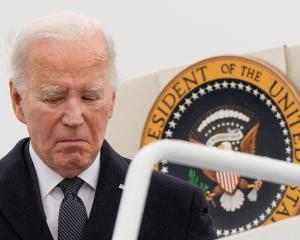Salami tactics are useful when dealing with problems that are too big to resolve in one go. Muster all your resources and deal with one aspect of the problem. Come back later, when your resources have grown, and hack off a different piece. Repeat as necessary, until the problem disappears.
Salami tactics are driving the make-or-break climate summit that opens in Paris on November 30. More than 150 countries have been making binding pledges to cut their emissions of carbon dioxide and other ''greenhouse gases''.
This is better than what happened last time, at the disastrous Copenhagen summit in 2009, where only the developed countries were willing to make any promises at all.
Even China, now the biggest emitter in the world, was refusing to accept any limits on its emissions on the grounds that the small group of countries that industrialised early (basically the West plus Japan) were historically responsible for 80% of the greenhouse gases in the atmosphere. The Copenhagen summit broke up in disarray, with nothing of substance accomplished, and we had to wait six years for another kick at the can.
Now both the United States and China, the two biggest hold-outs last time, are making concrete offers to control their emissions. That's crucial, because together they account for 40% of global emissions.
The conference must also come up with acceptable ways to monitor the emission cuts everybody is promising to make and to discipline the laggards and the cheats. But let's be optimistic, and assume the summit can even agree on a mechanism to transfer $100billion annually from the rich countries to the poor countries to help them cut their omissions.
That still won't save us from runaway warming and all the calamities that would entail.
Late last month, the United Nations did an analysis of the 146 national plans for emissions cuts (including those of all the big countries) that had already been submitted. Unfortunately, the numbers do not add up.
If all the promises are kept, global emissions will slow down - but the world will still end up in the year 2100 with an average temperature 2.7degC higher than it was in the late 19th century. Yet all the governments going to Paris have acknowledged that the average global temperature must never exceed 2degC higher.
What can they be thinking? Unlike the media and most of the lay public, the governments understand 2degC is already catastrophic. If we stay there long enough, all the ice on the planet eventually melts and the sea level rises by 70m.
Even in the much shorter term, 2degC means massive storms, widespread desertification, the loss of the world's coral reefs and a crash in fish stocks due to ocean acidification. Food production worldwide will plummet, and there will be massive, unstoppable refugee flows as hunger and wars devastate the more vulnerable countries.
The governments also know that exceeding plus-2 or maybe even just getting near it will trigger the ''feedbacks'': an ice-free Arctic Ocean absorbs the sun's heat rather than reflecting it, the melting of the permafrost zone releases enormous amounts of carbon dioxide into the atmosphere, and the warming of the oceans releases even more.
At that point, the warming moves beyond human ability to control. The feedbacks, once started, are unstoppable. Even if human beings ultimately get their own emissions down to zero, the feedbacks will still take us up to plus-4, plus-5, maybe even plus-6 degrees eventually.
The governments know all this, and yet they have still come up with total promised cuts in emissions that deliver us to an average global temperature of 2.7degC by the end of the century. What can they be thinking?
They think that they are going as far as they can safely go without committing political suicide. Every government must contend with huge vested interests at home that will be hurt by the shift away from fossil fuels and towards renewables. If governments go too far too fast, they risk being destroyed by the backlash.
OK, so they are doing all they can politically - but what about the future of the human race? Well, you see, even inadequate cuts in emissions will increase the amount of time it takes for us to reach 2degC. And the governments secretly think that we can use that extra time to come back for another conference in three or five years' time and agree to bigger emissions cuts.
Those further cuts will give us still more time before we reach plus-2, and we use that time for another round of cuts. Like Xeno's arrow, we get closer and closer to the target (which we must never hit) but never quite reach it. Warming certainly reaches 1.8degC or something like that, but it never quite hits plus two.
Salami tactics. Although there is also a whiff of Russian roulette to this way of doing business.












